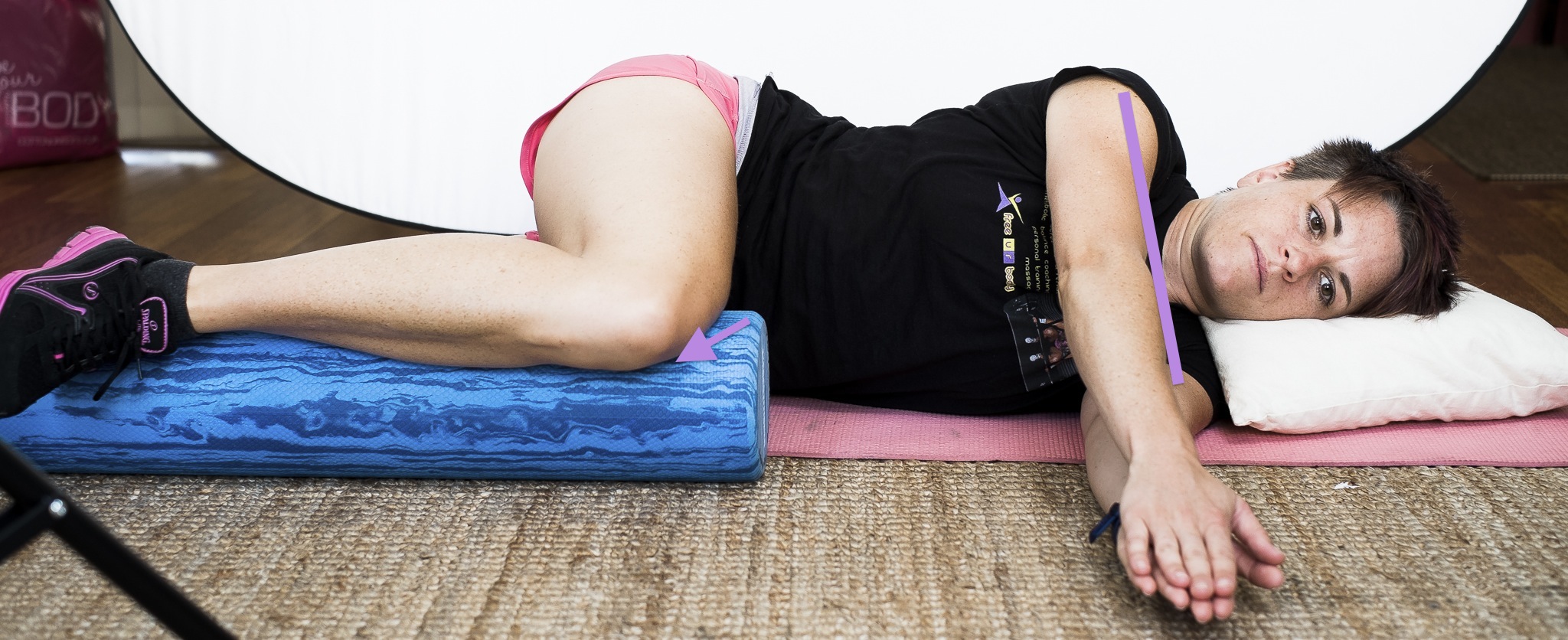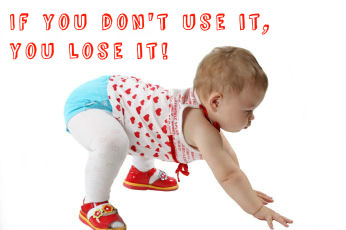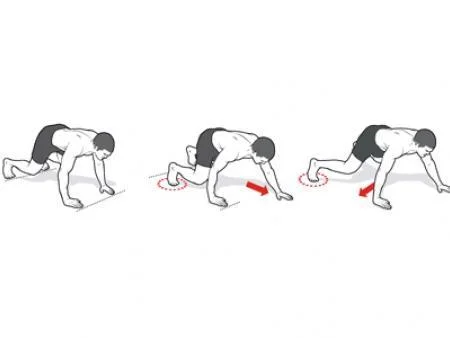Online Fitness Training & Movement Rehab by a Qualified Physiotherapist & Personal Trainer.
PLANTAR FASCIA TENSION RELEASE - BRINGING RELIEF TO THE SUPERFICIAL BACK LINE
YOUR CHILD'S IPAD POSTURE
THE FUNDAMENTAL FLAWS OF CROSSFIT
Dr Stuart McGill, an expert on spinal health, brought up some valid points in this article - https://www.t-nation.com/training/doctors-view-of-crossfit
Here is my opinion:
I had previously been involved in crossfit for about 4 years, mostly training myself and competing in local comps, I joined a box (cross fit gym) for 6 months and then stopped crossfit altogether. This was long before there was a box on every corner and the words “wod”, “snatch” and “kipping” were so commonly known. I’ve seen a lot of different boxes and coaches and experienced them first hand as well as from a distance. I’ve also watched many a crossfitter compete and train and the same pet hates rear their ugly heads each time.
I will keep this short, sweet & to the point…here is a list of my issues with crossfit:
Most boxes don’t assess an individual's movement capacity prior to throwing them in a class nor do they take a record of their previous injuries…therefore leaving them open to risk of injury! It is the coaches responsibility to ensure each individual is training to THEIR individual capacity and to keep them safe from harm.
Scaleable does not = safe…one size does not fit all, just because you scale a movement for someone does not mean that the particular movement or the combination of movements in a particular workout aren't harmful for that individual.
The programming is just as advertised, “random” - often unqualified level 1 cross fit coaches are programming wods and bunching together random movements that as a workout can place excessive load on certain structures which can lead to injury or cause repetitive strain.
Not having at the very least a basic Cert III Fitness Training qualification as a coach (Cert III is even far from enough in my opinion).
Not having a clue about the human body; motor control or biomechanics and being a coach…as a result not knowing HOW to correct someone’s form in a way that works for THEM or not having the ability to assess someone's movement capacity before they even start crossfit.
Repeating the same movement (i.e. olympic lifts; chin ups; ghd sit-ups) within an extremely high rep range (50-100 reps) is only asking for fatigue and injury to come onboard. If endurance is what you want…pick your movements carefully!
Don’t believe or think peeing yourself is ok during a workout…this should NOT be happening!
Teaching someone how to snatch/clean & press in 10mins....followed by allowing that someone to load a snatch/clean & press the next time they're in the gym and/or encouraging them to find their 1RM is irresponsible.
Doing complex movements at heavy weights for large amounts of reps is not good for anyones motor control or spinal health. Fatigue will set in quick and this is when injury occurs or faulty movement patterns are engrained.
Cheering on someone to finish a workout with horrendous form when the better thing to do is get them to stop or rest enough for their muscles to actually be able to perform the task well.
Cheering on someone who has just completed a 1RM of any movement with compromising form (I've seen some shockers!).
Focussing on the numbers (how much you can lift) over the technique.
Advancing people onto kipping pullups before they can actually achieve a single decent strict bodyweight pullup unassisted (it should ideally be about 5 reps strict before attempting kipping), I would argue that chin-ups are more of a complex movement and used for strength rather than endurance so should be kept as a low rep strength movement and therefore ALWAYS be strict!
Thinking it's cool and hardcore to push through injury or physical damage i.e. ripped hands/chunks out of shins. These things ALL affect motor control!
Cost of crossfit memberships are extortionate considering the quality of coaching in most boxes - cost should reflect the quality of the service…a lot of boxes have one trainer (who usually just walks around shouting “good job”; “push guys”; “you got this” & not correcting horrible form) to 15-20 crossfitters…that is unsafe in my book!
If you apply the above points to anything you will have a bunch of messed up bodies.
ROLLING PATTERNS FOR ROTATION
Rolling is a fundamental movement we all learned how to do during neurodevelopment, it is the second milestone in neurodevelopment after head control. Rolling combines the use of the upper extremities, core, and lower extremities in a coordinated manner to move from one posture to another. This is done from prone (face down) to supine (face up) and supine to prone.
Rolling is commonly utilised in neurological rehabilitation but is just as important and effective in any rehabilitation programme, particularly for those who have dysfunction in rotational movements or who play rotational dominant sports. It can be used as an assessment and it is also the corrective. There are several cues to help improve someone's rolling pattern and also regressions available.
It is a great method to assess for and correct inefficient movements that involve rotation of the trunk and body; weight shifting in the lower body; and coordinated movements of the head, neck, and upper body.
Upper limb rolling begins with the eyes and head moving in the transverse/rotational plane with the body being taken along for the ride - "where the eyes go the body will follow". Rolling can be done either leading with the upper limb or lower limb, depending on your assessment findings and needs.
DO YOU STRUGGLE WITH PULLUPS?
WHY YOU'RE EXPERIENCING SHOULDER PAIN & HOW TO IMPROVE IT
In order for your shoulder to function optimally, you need good thoracic (upper back) mobility. Too many people have poor upper thoracic mobility — tightness in the area between your shoulder blades — due to spending many hours at the computer, poor posture, not being active enough, etc. This can lead to problems in shoulder joints, rotator cuff issues and bursitis
We all need good extension through our upper backs in order to complete overhead movements without compromising shoulder joints. In order to improve your upper back mobility, here are a few exercises that can be done at home on a daily basis.
Foam Roller Extension
This will help improve your thoracic mobility into extension. If you're fortunate enough to have a foam roller at home or access to one in the gym, try this...
Sit comfortably with knees bent and bottom on the floor. Place foam roller below shoulder blades, hands behind head.
Keeping your bottom in contact with the floor, slowly breathe out and let your back gently extend over the foam roller. Hold for a count of 3-5 seconds and slowly rise back up to start position.
Repeat this twice and then gently roll the foam roller an inch further up the spine, repeating the extension movement twice. Keep inching the roller up the spine until you've reached the top of your shoulder blades.
Side Lying Thoracic Opener
This will help improve your thoracic mobility into rotation...
Lie on your side with your head supported and bend your knee to 90 degrees before resting it on a foam roller or firm pillow (this protects your lower back). Keep arms outstretched and hands stacked on top of each other.
Start to raise the top hand up and slowly bring it over to the other side of your body, letting your eyes follow that hand all the way, until you can't go further. Make sure your knee stays in contact with the foam roller/pillow and your resting shoulder in contact with the mat, otherwise you've gone too far.
Ensure you can still breathe comfortably and hold for 3-4 breaths, return hand to start position and repeat. Do this 10 times on each side. You'll find that by the last few reps, you'll be able to reach further than the start.
Thoracic Rotation
Only attempt this if you have relatively good shoulder and core strength. This is a good follow on exercise for pain free shoulders that require strength building.
In a standard plank position, make sure your hands are inline with shoulders. Spine (including neck) should be neutral and bum tucked under to engage the glutes, feet just wider than shoulder width apart.
Gently push one hand into the floor, keeping the body aligned and raise the other hand off to rotate around and reach up to the ceiling. Shoulders should be stacked (wrist, shoulder, opposite shoulder and opposite wrist all in one line) and no sagging at the hips.
Your eyes should follow the moving hand at all times. Return to start position and rotate with the opposite arm. Repeat 5-10 times on each side.
Give these a try and let me know how you go!...
DO YOU GET LOW BACK PAIN WITH DEADLIFTS OR KETTLEBELL SWINGS?
Perhaps you are compromising your back as a result of poor hip movement...
Studies done on low back pain show that the pain is often caused by losing the ability to move through the hips. I see this all the time in clients and always have to re-pattern their hip movement to save their backs!
Dr Stuart McGill strikes again: “This is why the hip hinge is known to be a superior movement pattern for low back pain clients. Learning to hip hinge is paramount for both injury prevention and optimal performance.”
Too right Stuart!
Learn how to move before you learn how to be strong!
If you'd like to learn how to hip hinge correctly, check this out.
If you feel like you need to work on your hip mobility then follow one of our hip mobility videos here.
Don't sacrifice your lower back for Deadlifts or Kettlebell Swings unless the movement has been broken down and taught to you effectively and you can carry it out extremely well.
LOW BACK PAIN AND MOVEMENT
CORE EXERCISE #4: CRAWLING
4th and final core exercise in our top 4...
CRAWLING:
If you are a client of mine you probably just felt a shudder down your spine...the beloved crawling pattern. You either love it or you hate it!
I personally love it as it is an awesome drill for:
- cross-patterning
- co-ordination
- core stability
- core function
- connecting left & right brain
- getting back to basics
- having fun
- mental stimulation
It also follows on nicely from the previous mentioned BIRD DOG drill, the crawling precursor.
The video demonstrates the basic crawling pattern, there are many other versions of crawling. It is a challenge to fight gravity and this is required of us on a daily basis, so why not try this cheeky little drill yourself and see what you think...feel free to comment below and share your thoughts or experiences.














